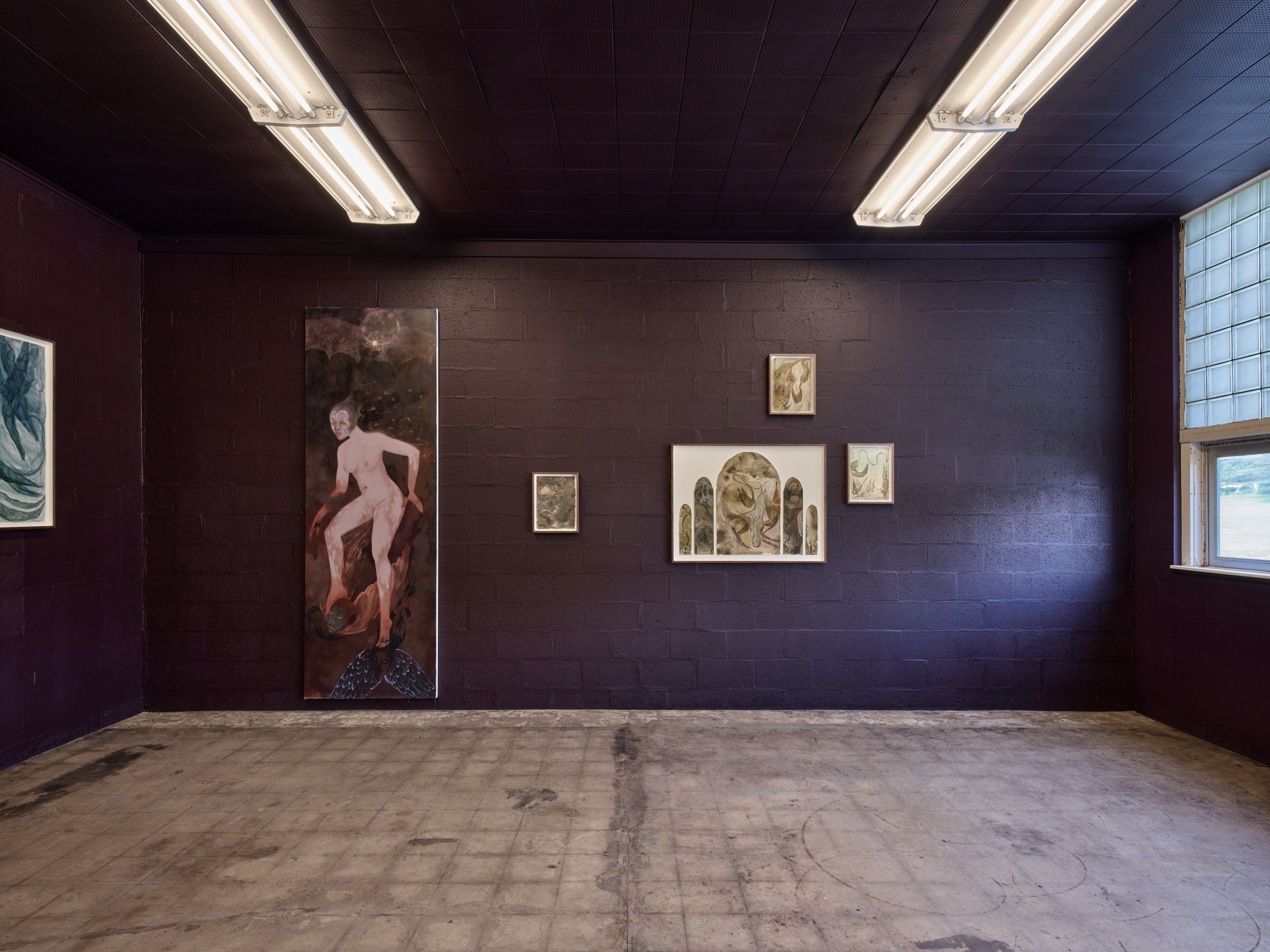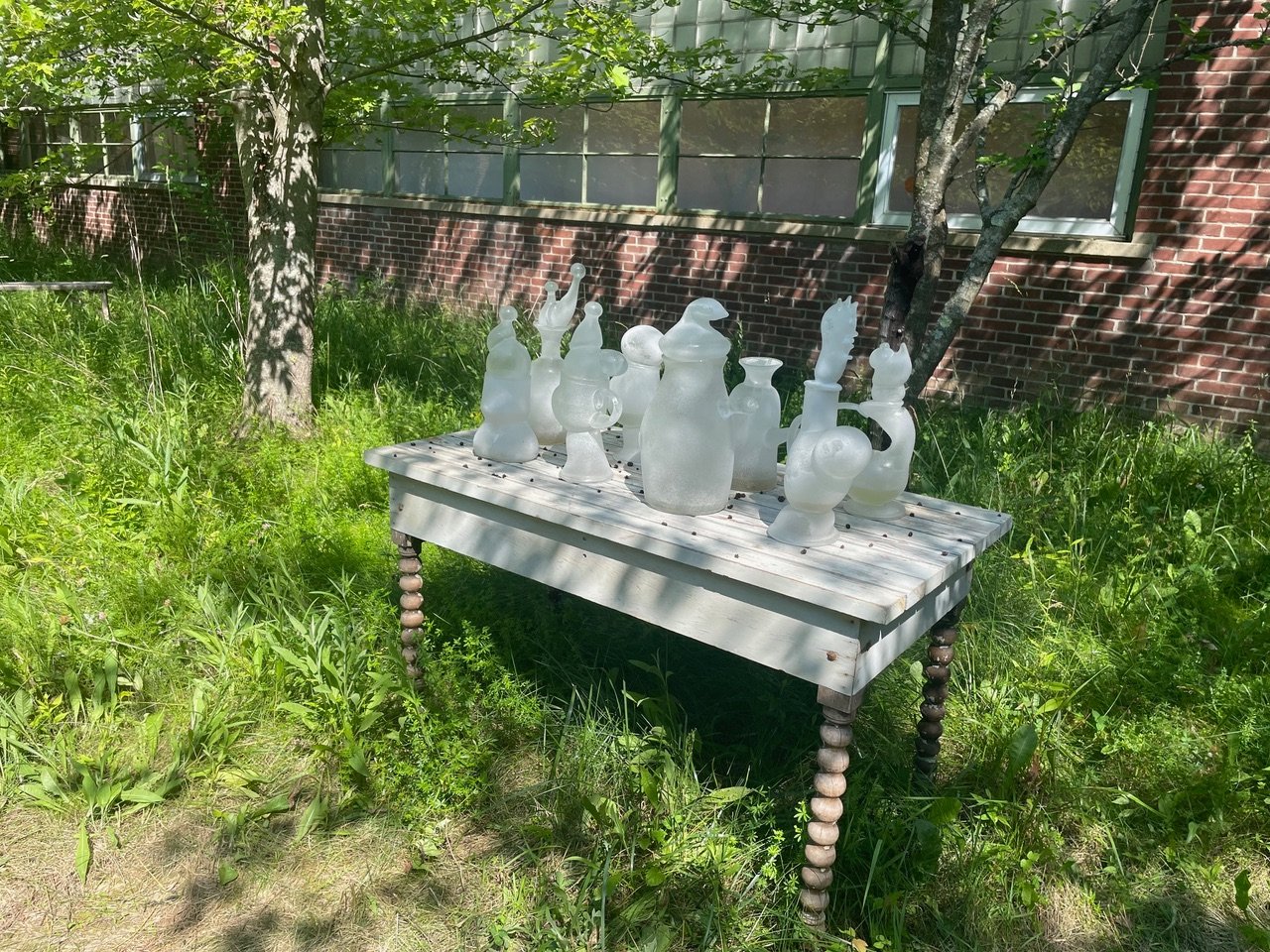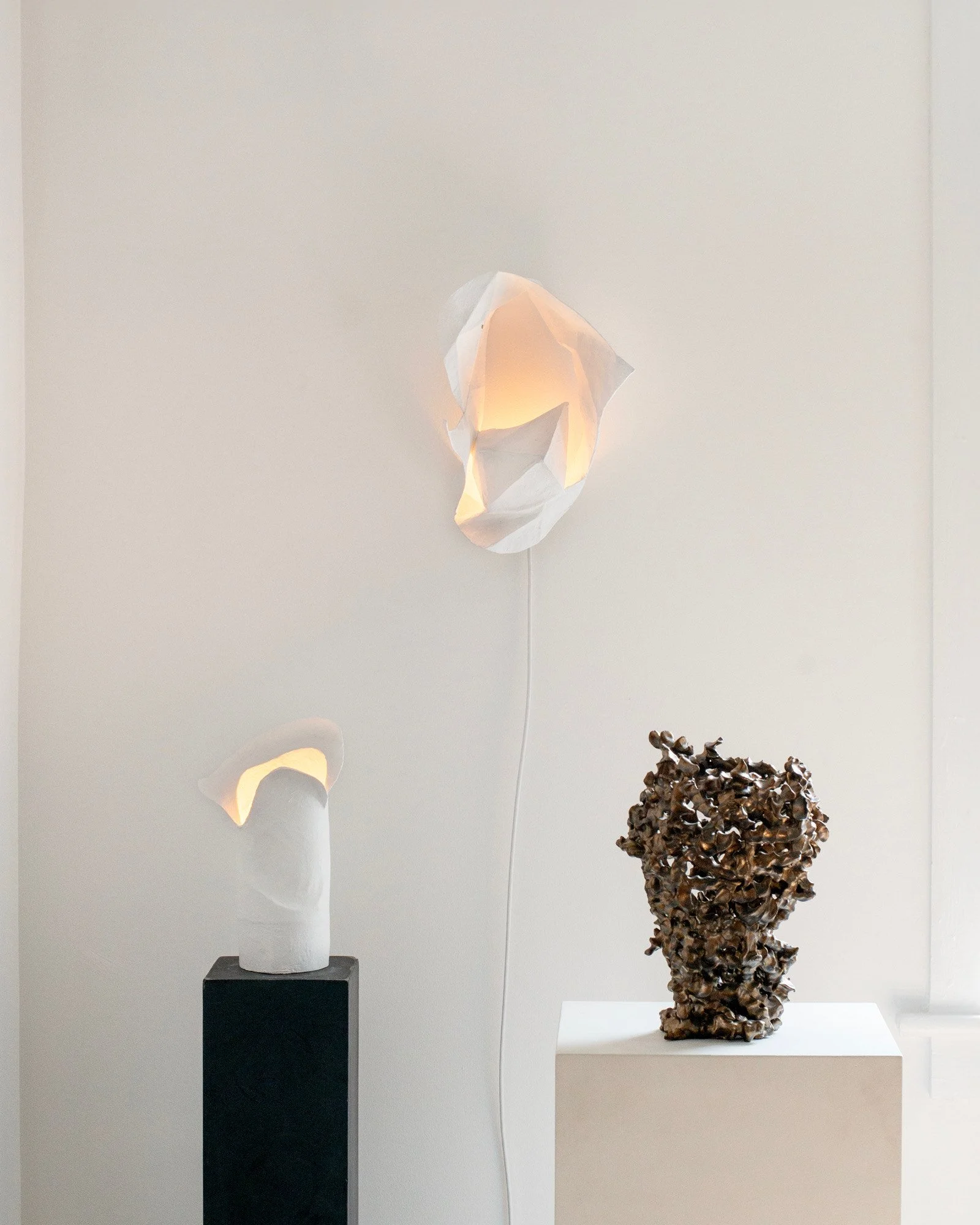'2025 Annual Exhibition,' The Campus, 'Altered States' at Leo Koenig, and 'Shaping Shadows: Sylvia Estes and Sarah Mijares Fick,' at at Mary MacGill.
‘2025 Annual Exhibition,’ The Campus, Hudson, N.Y., June 28-October 26, ‘25.
Installation view, works by Naudline Pierre at The Campus, 2025; photo courtesy James Cohan Gallery and The Campus.
The mid-Hudson Valley contemporary art arena expanded dramatically this season with the debut of the Sky High Farm’s Biennial in Germantown, on the same weekend as the reincarnation of The Campus in Hudson. A sprawling exhibition of works by some eighty artists arranged in over 35 rooms and outdoors spaces, The Campus occupies a disused high school building just outside Hudson. There have been some significant improvements in the Campus presentations for this second installment, as some of the participating artists, dealers, or artists’ representatives decided to enhance a number of the rather abject interior spaces—rundown classrooms, offices, bathrooms, and the like—with clean walls and a fresh coat of paint to complement the works. Organized by curator Timo Kappeller, The Campus is a collaborative project of six prominent New York City galleries: Andrew Kreps, Anton Kern, James Cohan, Bortolami, kaufmann repetto, and kurimanzutto.
Paula Hayes, Sometimes I wish it would stay, sometimes I wish it would go away, (detail), hand blown glass, antique table, 2025, at The Campus; photo David Ebony.
Several outstanding solo presentations are in the mix this time. In a room with walls painted with a deep plum tone, Naudline Pierre presents a refined exhibition of her recent figurative paintings and works on paper exemplative of the personal cosmology that she has explored over the years. Always the provocateur (without ever breaking a sweat) Richard Tuttle covered the gray walls of one room with a series of new monochrome relief sculptures made of what appears to be plain wood molding. Seemingly effortless (except perhaps for a visit to The Home Depot), the series, Invasive Species (2025), suggests some rarified cuneiform script yet to be translated. Kiki Smith presents here a series of color photographs, a large tapestry, and two large-scale bronze “trees.” Titled Sungrazer VIII and Sungrazer IX (both 2019), the bronzes, each topped by a radiating “sun,” appear as freestanding theatrical props, yet directly correspond to nature in a fresh and poignant way. Paula Hayes invites viewers outside, toward nature—into a small overgrown garden off the main structure. There, placed atop antique wood tables, Hayes has arranged a series of handblown glass objects in pale white that appear as ghostly apparitions.
Perhaps the most engaging and challenging presentations this year are the duo or three-person exhibitions, such as the pairing of several jarring, recent figure paintings by Dana Schutz with the equally eccentric though elegant sculptures by Ryan Johnson. In another area, the union of three distinct abstract visual languages—colorful gestural paintings and a silk wall hanging by Katharina Grosse; Op-art-like 3-D mirrored relief works by Daniel Buren; and two recent free-standing sculptures in ceramics, bronze and steel by Arlene Shechet—offers viewers an exhilarating once-in-a lifetime confluence of disparate formal concerns and conceptual aims. —David Ebony
‘Altered States’ at Leo Koenig, Inc., Andes, N.Y., May 25-July 20, ‘25.
Installation view, Altered States at Leo Koenig, Inc; showing works by Tony Matelli (foreground), and Loreno Amos; photo courtesy Leo Koening, Inc.
Visitors to the Catskills this summer can be rewarded with a visit to Leo Koenig’s newly opened venue in Andes, N.Y., a meticulously renovated former 19th-century butter factory turned into an elegant contemporary art space The gallery hosts an inaugural exhibition that explores altered states of consciousness. Inspired by the 1980 Ken Russell film, Altered States, the exhibition features top-notch works by Adam McEwen, Lorenzo Amos, Sherrie Levine, Sere Serpas, Tony Matelli, Thomas Schütte, and On Kawara. Central to the show’s theme, the concept of time is well represented by the rigorously diaristic date paintings by the late On Kawara.
The film’s more hallucinatory aspects are reflected in the eerie, solid graphite sculptural works by McEwen. His ominous Rolldown Gate (2012), for instance, secures a space that will never be seen, and the uncanny Payphone (2018), is a rendering of an obsolete telecommunications device that must be explained to younger viewers. Matelli nearly steals the show with his incongruously comic imagery and technical prowess. His life-size, upside-down flower pots are arresting and as is Yesterday (2014), which appears to be a fragile house of cards towering some eight feet high. Made of painted bronze, steel and painted fiberglass, however, the sculpture assumes an unexpected feeling of permanence and monumentality. Matelli’s fiberglass and concrete Lion (Pizza), 2019, looks like a battered antique statue of a lion like the famous Venetian one. Covered with pizza slices and hotdogs, however, this work clearly presents an acerbic critique of monumentality and all of its socio-political ramifications. —David Ebony
‘Shaping Shadows: Sylvia Estes and Sarah Mijares Fick,’ at Mary MacGill, Germantown, N.Y., May 17-July 15, ‘25.
After the spectacle of big art shows like The Campus, or the Sky High Farm Biennial, art goers may be refreshed and inspired by encountering art within the confines of an intimate boutique like Mary MacGill’s Germantown space. Among the articles of clothing and jewelry here, sculptural works by Sylvia Estes and Sarah Mijares Fick, shine—often literally. Estes transforms found materials into elegant organic shapes covered in white gesso. She sometimes incorporates light fixtures within some of the pieces so they can illuminate a room like a wall sconce, lamp or chandelier. Not all of her works are outfitted in this way and can appear as freestanding abstract sculptures. Fick’s ceramic sculptures with white monochrome or highly reflective glazes, are made with countless hand-squeezed clay fragments. Their improvised tactility and insistence on intimate gesture convey a feeling of sensuous mutability in each work. —David Ebony
Installation view, Shaping Shadows, 2025, at Mary MacGill, showing light works by Sylvia Estes and ceramic sculpture by Sarah Mijares Fick; photo courtesy of Mary MacGill gallery.




